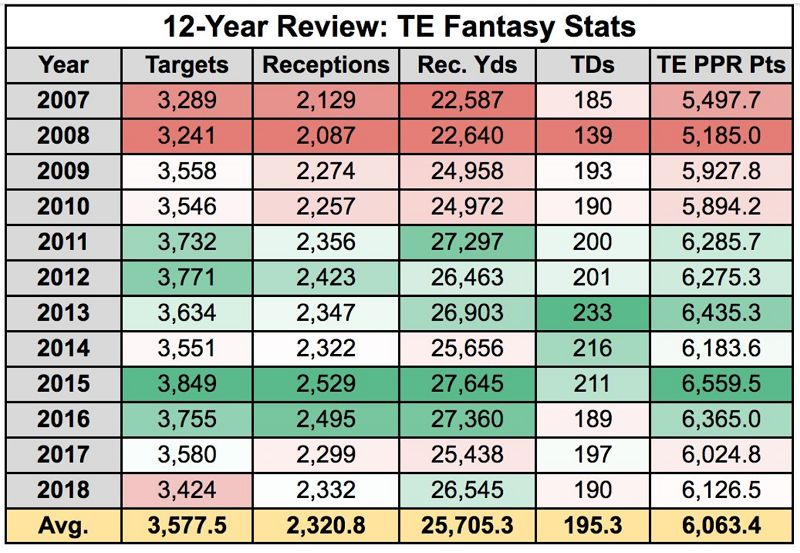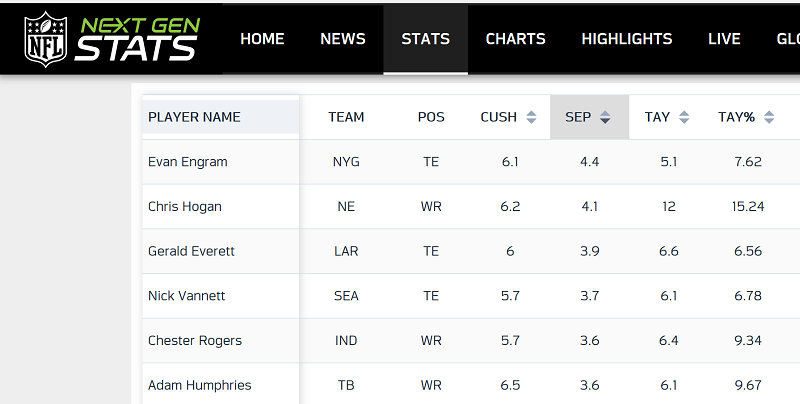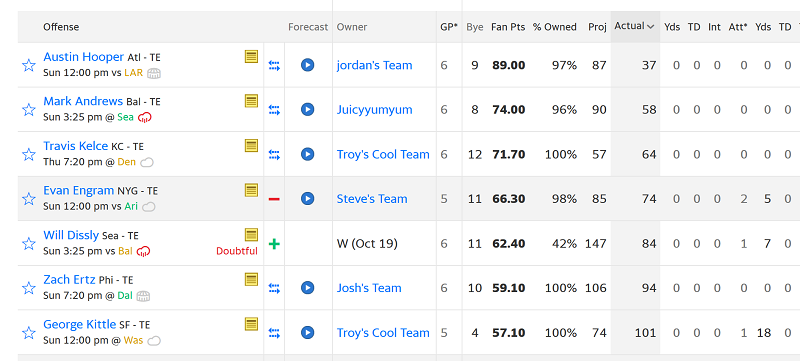
By Steve Cavolick
I love the start of the NFL season is because it means I can watch football three nights a week. It also means I get to be the general manager of a fake team I draft as my own in fantasy football.
The beginning of fantasy football drafts is pretty straightforward: the first couple of rounds are usually dominated by some combinations of running backs and wide receivers who touch the ball a lot. One challenge every fantasy player faces this year is when to address the tight end position. Three players star at the position: Travis Kelce, George Kittle, and Zach Ertz. After that, there are a number of players who could be good or may be poised for a break-out season, but their career body of work leaves you guessing as to what their production could be over an entire season. So what should you do?
There are two schools of thought: draft one of the top three tight ends listed above in the early rounds as a sure thing and dominate that position on a weekly basis. However, the price of taking a top tight end in round two comes with the opportunity cost of drafting another top running back or receiver.
The other approach is to stockpile productive players from other positions and wait to draft a tight end in the middle rounds. If you use this tactic, how do you know who to pick? Let me take you through some of my thinking as I created my teams this year, and how I used analytics to make my decision.
First, I looked at aggregate tight end fantasy production over time. NFL.com had an awesome article on that and made it easy to review data:

The thing that jumped out at me was the negative trend for the position across all categories since 2015. You earn points in your league for receptions, yards, and touchdowns, and all of those are becoming harder to come by with tight ends. With all three in decline, it cements the decision that you must get this position right. You can’t guess.
I decided not to invest an early pick on the position and focused on the next tier of players. Those included Eric Ebron, Evan Engram, Hunter Henry, and O.J. Howard. I found additional information on individual player performance on the NextGen Stats website. Many of these metrics were new to me, but the web site’s glossary made it easy to understand what I was looking at.
A nugget that was easy to see was that Evan Engram was #1 in 2018 in Separation among receivers of any kind. This metric shows the amount of space in yards that is between a receiver and the nearest defender for every reception. At 4.4 yards, this means that every time Engram caught the ball last year, there was on average over 13 feet between him and a defender. He gets way open on his routes, which makes him a desirable target to throw the ball to.

Speaking of targets, I also sorted on that measurement, and Engram came up #15 at his position last year. That’s barely in the top 50%, but the makeup of his team is different this year. The Giants’ top 2 receivers from last season are gone, which means that someone is due for an increased workload. I liked Engram’s chances to pick up extra receptions, which should translate to more yards, touchdowns, and fantasy points. Engram also measured #2 for all receivers in Yards After Catch per Reception (YAC/R), meaning once he caught the ball, he gained a lot of extra yards. This makes sense, given his propensity to get open.
Based on these facts, I made it a point to focus on drafting Evan Engram as my tight end. I drafted him in the middle of the 6th round and am I glad I did: after 6 weeks, including one in which he missed because of injury, Evan Engram is #4 in fantasy points for his position.

Converting data into insight you can understand and take action on can help you win a fantasy sports league, or in the non-fantasy world, help you optimize operations, increase revenue, and lower expenses.
The LRS Big Data and Analytics team has over 20 years of experience in statistics, information management, predictive analytics and AI, and data warehousing. If you are interested in understanding how we can help you find value in your data with advanced analytics, please fill out the form below to request a meeting.
About the author
Steve Cavolick is a Senior Solution Architect with LRS IT Solutions. With over 20 years of experience in enterprise business analytics and information management, Steve is 100% focused on helping customers find value in their data to drive better business outcomes. Using technologies from best-of-breed vendors, he has created solutions for the retail, telco, manufacturing, distribution, financial services, gaming, and insurance industries.